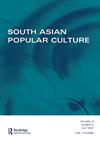Imagined communities and blind nationalism in South Asian Cinema: The case of war films Ghazi Shaheed (1998) and The Ghazi Attack (2017)
IF 0.3
0 ASIAN STUDIES
引用次数: 0
Abstract
ABSTRACT Anderson argued that it was not just the ‘innovation’ of nations as an entity that is important but also the material conditions. The extent of nationalism and patriotism used as a tool in mass media (printed texts and popular culture) in India and Pakistan is evidence of the persisting enmity between neighboring states, which popular culture not only depicts but also ends up reinforcing with its construction of ‘the other’ and ‘the enemy’. The paper analyzes two films, Pakistan’s Ghazi Shaheed (1998) and India’s The Ghazi Attack (2017), which are war-at-sea and submarine films, respectively, To answer the research questions: How do these movies depict ‘imagined’ community and ‘blind’ nationalism? How is this depiction of ‘imagined’ community and ‘blind’ nationalism, similar or different in the two movies made on the same theme, given the backdrop of war and its outcome? In my analysis of the two films, I explore two facets of the concept of blindness: first, referencing Anderson’s definition of being unable to see the community members or enemies, and the blindness one experiences while underwater in a submarine. The paper argues that these ‘imagined’ communities find their stronghold in religion, culture, language, and ways of being in order to justify the existence of separate nations despite being part of the same landmass and empire for centuries. The ‘submarine’ is both an abode for men at sea and a weapon run for the enemy. The submarine, as a patriotically charged body at sea, serving the idea of nationhood, is an extension of the nation’s body in water, unable to see but functioning on the perception and identity gained from the ‘motherland’.南亚电影中的想象社区和盲目民族主义:战争电影《加齐·沙希德》(1998)和《加齐袭击》(2017)
摘要Anderson认为,重要的不仅仅是国家作为一个实体的“创新”,还有物质条件。在印度和巴基斯坦,民族主义和爱国主义在大众媒体(印刷文本和流行文化)中被用作工具的程度证明了邻国之间持续存在的敌意,流行文化不仅描绘了这种敌意,而且最终通过构建“他者”和“敌人”来加强这种敌意。本文分析了巴基斯坦的《加齐·沙希德》(1998)和印度的《加齐袭击》(2017)这两部分别是海上战争和潜艇电影,以回答研究问题:这些电影如何描绘“想象中的”社区和“盲目的”民族主义?在战争及其结果的背景下,这两部主题相同的电影对“想象中的”社区和“盲目的”民族主义的描述是如何相似或不同的?在我对这两部电影的分析中,我探讨了失明概念的两个方面:首先,参考安德森对看不见社区成员或敌人的定义,以及一个人在潜艇水下时所经历的失明。该论文认为,这些“想象中”的社区在宗教、文化、语言和生活方式中找到了自己的据点,以证明尽管几个世纪以来都是同一块土地和帝国的一部分,但独立国家的存在是合理的。“潜艇”既是海上人员的住所,也是敌人的武器。潜艇作为一个充满爱国主义色彩的海上主体,服务于国家的理念,是国家在水中的身体的延伸,无法看到,只能根据从“祖国”获得的感知和身份发挥作用。
本文章由计算机程序翻译,如有差异,请以英文原文为准。
求助全文
约1分钟内获得全文
求助全文
来源期刊

South Asian Popular Culture
Arts and Humanities-Visual Arts and Performing Arts
CiteScore
1.00
自引率
0.00%
发文量
29
 求助内容:
求助内容: 应助结果提醒方式:
应助结果提醒方式:


